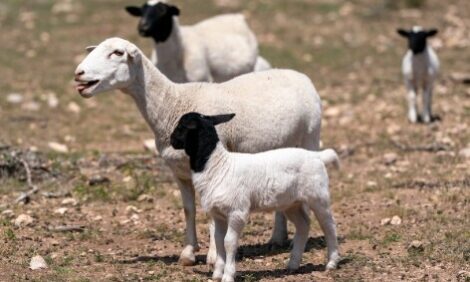



Federal testing on more retail dairy products finds no live H5N1 virus
Testing included different cheeses, including some aged varieties made from raw milk, butter, ice cream, and milkA second round of testing of retail dairy products, which includes more products such as cheese and butter and from a broader geographic area, found no live H5N1 avian flu virus in any of the samples, federal officials said in December.
At a Department of Health and Human Services (HHS) media briefing, Steve Grube, MD, chief medical officer for the Food and Drug Administration (FDA) Center for Food Safety and Applied Nutrition (CFSAN), said the testing included 167 samples from 27 states and was designed to provide a more comprehensive picture of H5N1's impact on different products.
Various samples tested, including from raw-milk products
Testing included different cheeses, including some aged varieties made from raw milk, butter, ice cream, and milk.
FDA and US Department of Agriculture scientists involved in the study recently published their findings on the medRxiv preprint server, meaning the data have not yet been peer-reviewed. Grube said though 17% of the products had traces of the virus (viral RNA), follow-up testing yielded no viable virus, which he said confirms the effectiveness of commercial pasteurization.
He said since dairy products aren't always made where the milk was collected, so it's hard to pinpoint the source for products that had virus traces. If live virus were found, however, scientists could unblind the samples and take steps to trace the products.
All 23 aged raw milk samples were negative for viral RNA via polymerase chain reaction (PCR) testing, but Grube said more research is needed to assess if the aging process is effective for virus inactivation.
Affected farms receive $2 million in support
Eric Deeble, DVM, the USDA's deputy undersecretary for marketing and regulatory programs, said the agency continues to intensify its efforts to let dairy farmers know about support for affected farms.
So far, 35 farms have applied for compensation for avian flu related milk losses, and 23 have been approved so far for support totaling about $2 million.
Meanwhile, Emilio Esteban, DVM, PhD, USDA undersecretary for food safety, said the USDA is launching a study to sample more samples from beef collected from culled dairy cows—animals that aren't sick but are removed from production for reasons such as lack of milk production. He said USDA scientists will test 800 samples over the next year.
Too soon to say if virus ebbing in dairy cattle
At today's briefing, Deeble said it's too soon to say if federal officials have gotten ahead of the outbreaks in dairy cows. Testing continues at a high level, and he said he thinks the federal response is adequate and that federal officials have a good picture of how the virus has spread through cattle movements to different states.
Currently, H5N1 confirmations in dairy herds appear to have slowed, standing at 190 herds in 13 states.
As fall approaches, though, interstate movements of dairy cows pick back up with a greater demand for milk, partly due to school resuming.
Grube said federal officials remain in contact with state regulators to best understand how and where to test milk in the supply chain.


